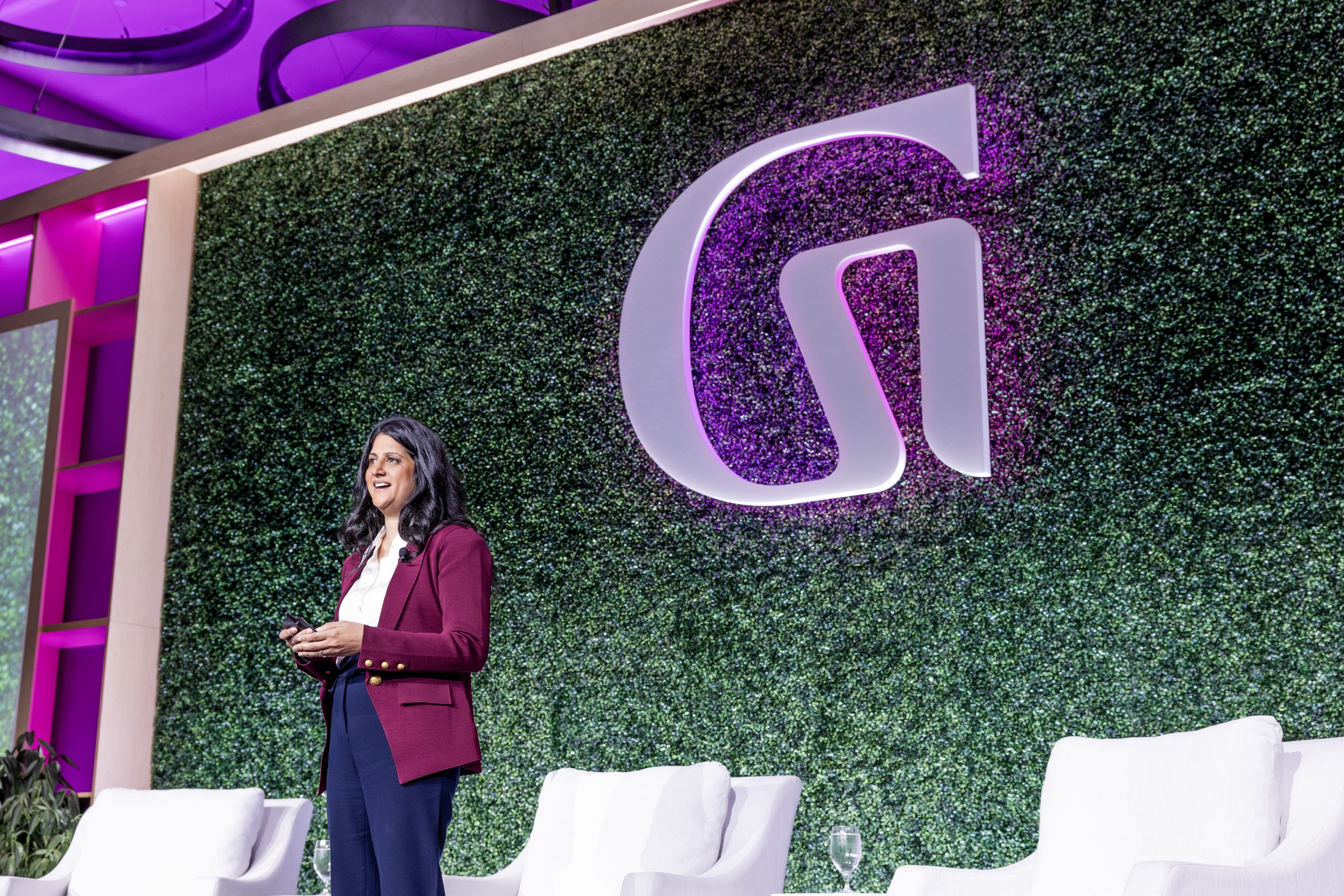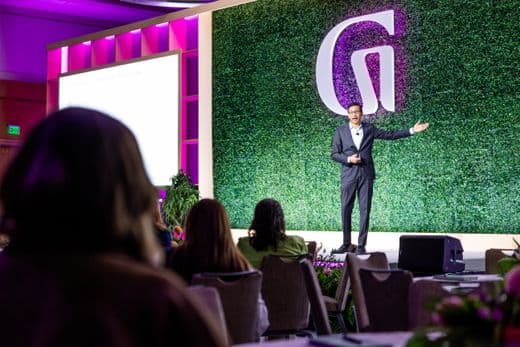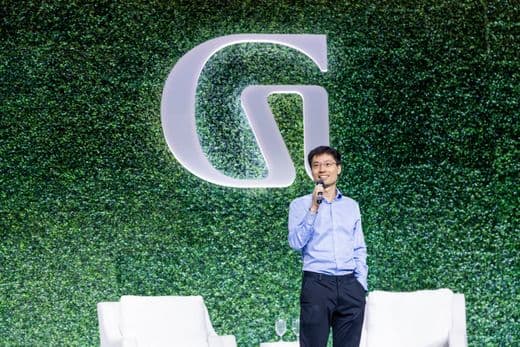Alex Cannon |
Opportunity Summit, Guild’s annual gathering of HR and business leaders, took place this year in San Diego. Over three days of keynote presentations and breakout sessions, executives, economists, and workforce leaders converged on one idea: The future of work belongs to organizations that move their people forward.
This year’s conversations made it clear that while the language of business continues to shift toward data, disruption, and scale, the real levers of progress remain stubbornly human. In particular, three themes emerged that cut through the noise and turn good strategy into lasting change: belief, story, and mobility.
Specifically, here’s what we learned:
1. There is a shortage of belief in the labor market.
The economy runs on conviction as much as it does on labor and capital. Guild CEO Bijal Shah reminded us that belief in the American Dream has fallen from 96% in 1987 to around 30% today. Raj Chetty, Harvard economist and founder of Opportunity Insights, traced that loss of faith in a decades-long data set: upward mobility, once nearly guaranteed for children born in the 1940s, is now a fifty-fifty shot for those born in the 1980s.
The numbers tell a story of erosion that poses an enormous problem for companies: If people don’t believe their effort will lead somewhere, the whole idea of progress stops compounding and businesses become less resilient as a result.
The problem is visible at all levels: Organizations not believing in the compound returns of long-term investment in people, leaders questioning whether their workforces can really evolve as quickly as the work needs to, employees feeling that upward mobility will never be accessible.
Belief, then, is the precondition for mobility, innovation, and everything the balance sheet later celebrates. When it drains out of a system or an organization, even the best strategies will stall.
So what fosters belief?
Speakers throughout the Summit described belief as less of a personality trait and more of an output of design choices. Shonna Waters, CEO of Fractional Insights, called it “psychological ergonomics,” or the fit between what a business demands and what its people need in order to keep growing.
Fractional Insights found that three needs — growth, security, and significance — consistently predict engagement and performance. When they go unmet, workforce angst rises, but when they are met, engagement increases by more than fourfold, and poachability risk is reduced by seventy-two percent.
Leaders who build belief focus on:
Making growth visible through transparent, well-communicated pathways, promotions, and redeployment options
Linking performance to purpose by ensuring all employees understand and can articulate how their work connects to the mission
Designing for resilience by building and protecting workforce ability to adapt to change, including investing in high-demand skills growth
The belief leaders show in their talent has a direct impact on ROI. Fractional Insights also found that organizations that have made intentional strides to reduce angst see a motivation increase of more than twelvefold.
2. The winning workforce strategies are stories everyone can tell.
The leaders driving measurable, business-aligned workforce progress are doing two things well: They’re solving for the most urgent business pain points, and they’re building narratives that build belief and make retelling easy.
Storytelling requires the right data but also the right frame. At Wellstar Health System, Chief Talent Officer Laura Dannels reframed career pathways as a story about patient safety, operational continuity, and revenue, turning talent development into an infrastructure play (fewer contract workers, more consistent outcomes).
Internal believability was also baked into a learning-and-placement initiative as Wellstar became a story about predictability: Every graduate from the program is guaranteed placement. That single, relatable promise helped make the strategy fundable for finance and credible for employees.
That same principle of making strategy human enough to travel is what Carnegie Mellon mathematician and educator Po-Shen Loh captured in his keynote call to keep workforces “thought full.” In a moment where companies are racing to figure out their AI strategies, durable skills such as curiosity and empathy are still what let people translate information into understanding and shared action. “If we just let AIs run everything, how do I know as a manager that an AI is really calibrated to what I want?” he asked. “I want to know that your values are aligned with mine.”
Across the main stage and breakouts, leaders shared how they made their storytelling more tangible:
Start with the loudest pain point. One banking HR leader said the fastest way to get business leaders to champion a program was to focus on their immediate problem. In her case, reframing internal mobility around closing branch-coverage gaps turned “career pathways” into “no more backfilling.”
Find a champion to build consensus. A healthcare executive described identifying a single operational leader willing to pilot a reskilling program, then using that leader’s success story as a proof point for everyone else.
Build stories that travel sideways. Instead of pitching up for approval first, several CHROs and HR leaders described equipping peers and managers to share the same line, one that was short, useful, and repeatable. (“We can grow our next hires from inside this district.” “Guaranteed placement, guaranteed pipeline.”)
Let the evidence do the critical retelling. Early results like a filled shift, better nursing retention, or a redeployed engineer became critical narrative currency that made belief stick.
The leaders who succeeded tended to talk about storytelling as infrastructure for believability, a way to make strategy repeatable and local.
3. Mobility is the decisive measure of corporate health.
If belief is invisible and storytelling is viral, then mobility is proof that both are serving workforce strategy.
Guild and Lightcast just released research findings on the indicators and drivers of resilience in organizations. The data shared on workforce mobility was blunt: mobility has been flat for nearly a decade and hovers around ten percent of all movement. For all the talk of agility, most organizations are stuck.
“We are in a reactionary economy,” said Matthew Daniel, senior principal at Guild. “Despite a post-pandemic surge [in mobility], companies have taken their foot off the accelerator.”
Interestingly, the outliers—those with sustained growth—shared a common trait of prioritizing workforce mobility.
Jenny Simons, VP of enterprise learning at Salesforce, described how redesigning roles, reskilling employees, and redeploying talent boosted internal mobility by 46% and raised career satisfaction scores by 20 points. The company’s “4R” approach — redesign, reskill, redeploy, rebalance — served as a successful playbook for both moving people and growing trust that movement inside the company is possible.
The organizations sustaining that kind of progress share one practice: They communicate mobility. As one leader put it, “A strategy only scales when people understand where they can go.” That’s where the practical guidance from Summit breakout leaders resonated most:
Talk about mobility in human terms. Marissa Andrada, chief culture officer at WUF World, urged leaders to drop “corponics” — the jargon that distances people from the work — and describe mobility through the lens of growth and readiness. When employees hear about “roles they can grow into” instead of “succession planning frameworks,” the idea stops being HR language and starts resonating with them.
Co-create the story of movement. Al Dea, founder of The Edge of Work, framed this as “coalition building.” The companies that gained traction invested in operations, finance, and frontline leaders to shape the mobility narrative together, making shared ownership of outcomes the default, not the exception.
Focus mobility efforts strategically. Alignment fails when belief, budget, and bureaucracy pull in different directions. The teams that advanced fastest connected mobility to specific operational needs like reducing premium labor or closing a coverage gap so that progress was profitable and defensibly scalable.
When cities and employers co-invest in mobility
Across the country, cities are partnering more closely with employers to build mobility together, treating it as a shared investment in regional resilience. Birmingham’s Good Jobs Birmingham initiative takes a “population-first” model to expand the local talent pool by pairing employer demand with wraparound supports like childcare and coaching to help residents prepare for roles companies are prioritizing now and into the future. For employers, it’s a way to strengthen pipelines while sharing the cost and infrastructure of workforce development.
Mobility, once visible, creates its own feedback loop. Employees that see mobility for top future-growing and resilient jobs see sixty-five percent higher tenure rates than those without for the same roles. When their peers see them progressing, they start to believe that their own paths exist, keeping companies growing and workforces resilient.



